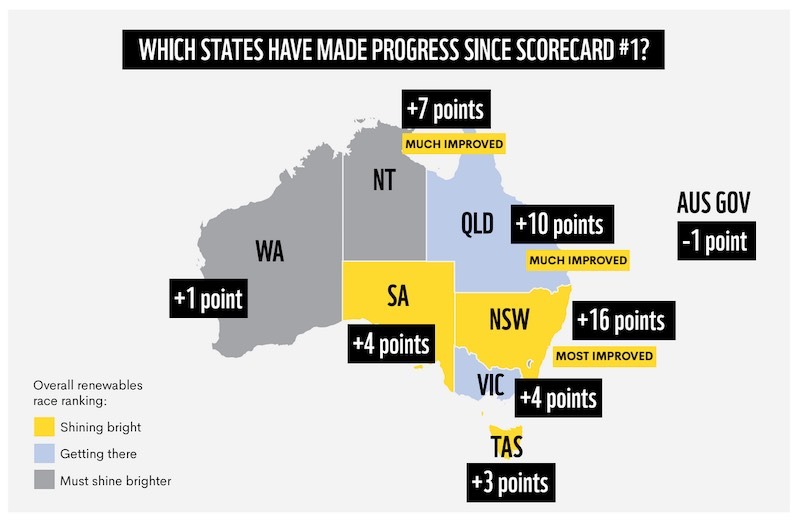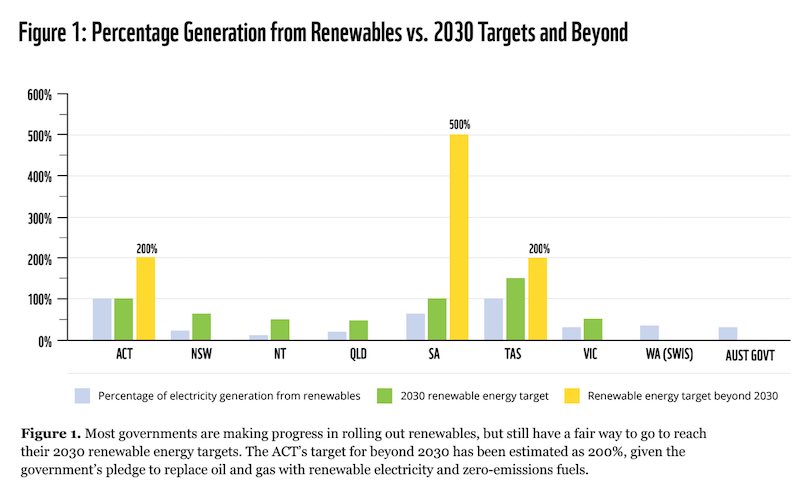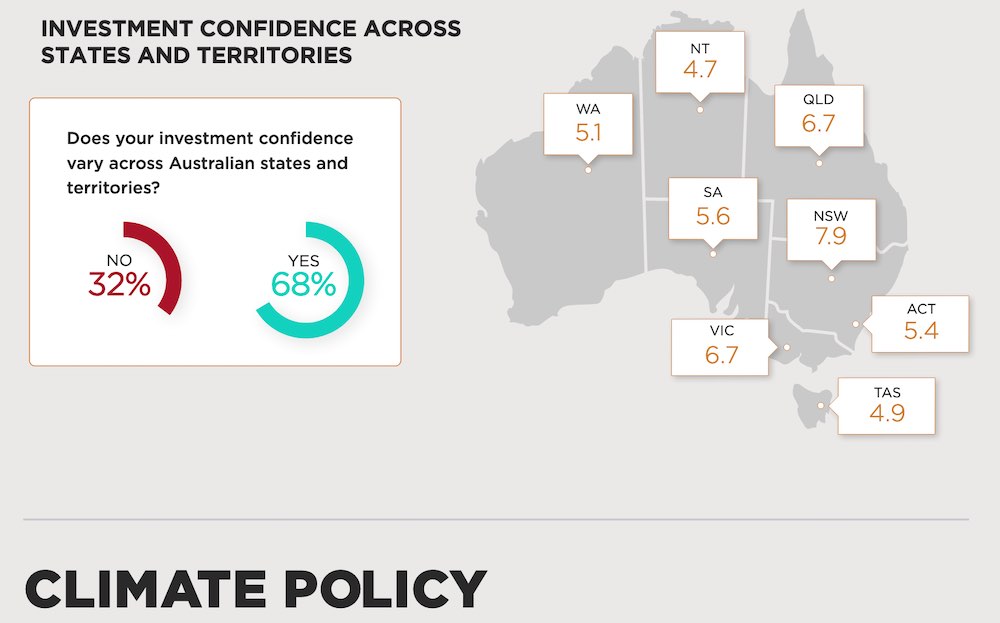Two new reports have highlighted the critical role Australian states and territories continue to play in driving renewables uptake around the country, at the same time as the federal government has consistently undermined investor confidence in the market.
The first report from WWF-Australia, ranks the progress of federal, state and territory governments in switching Australia’s domestic energy systems to renewables and establishing renewable export opportunities.
The WWF-Australia’s Renewable Superpower Scorecard finds that while all the states made progress of some kind, the federal government fell further behind, coming in at the bottom of the rankings after “missed opportunities” at COP26 to build its renewables and climate credentials.
Among the states, Tasmania holds the lead for its 200% renewables by 2040 policy, while New South Wales got a special mention as the “most improved”, after gaining 16 points to reach second place on the ladder, based on its recent renewable hydrogen policy and ongoing efforts to decarbonise industry and transport.
Earlier this month, the NSW Coalition government passed legislation unlocking $70 million in government investment for the creation of two new hydrogen hubs in the Illawarra and Hunter regions, as well as significant exemptions from government fees for green hydrogen producers.
The state also recently dedicated a further $105 million to boost the uptake of electric vehicles in fleets and ride share companies – on top of its June $490 million Electric Vehicle Strategy – just a day after the federal Coalition unveiled a disappointing “future fuels strategy” that will do little to boost EVs.
But as WWF-Australia’s energy transition manager Nicky Ison points out, the goal should not be for NSW or Queensland to become renewable superpowers on their own, but for all states to reach for this goal as part of a concerted national effort.
“We need committed federal direction, policy and funding to enable all states and territories to realise their renewables ambitions,” Ison said on Tuesday.
“We want Australia as a nation to achieve this status and show global markets we will be a resilient and reliable export partner as the world transitions to a clean energy future.
“We have the opportunity to become a renewables leader right across the supply chain by using our expertise, skill and natural resources to manufacture things that Australia and the rest of the world needs.
“With urgent government action, we have all of the right ingredients to become a renewable energy export powerhouse. If we fail to act, our economic future is at risk of decline, anchored to exports that are incompatible with a safe climate and increasingly unpopular with our trading partners,” Ison said.
The second report, the Clean Energy Council’s latest Clean Energy Outlook Confidence Index, looks at renewable energy investment confidence, employment trends and business challenges around the country.
It finds a small overall increase in investor confidence over the last six months – from 6.3 to 7.3 out of 10 – led by strong commitments and policy development from state governments, particularly on the east coast.
CEC chief Kane Thornton said that state and territory governments continued to provide “much needed policy ambition and clarity” that was vital to Australia’s transition to a renewable energy future.
The federal government, on the other hand, was inspiring little more than “ambivalence” in investors, even despite its long anticipated commitment to net zero emissions by 2050.
The report also found a clear majority of investors surveyed (79 per cent) said that it would increase their confidence for future investment in the Australian renewable energy market if the Morrison government boosted its 2030 emissions reduction target – a move it has instead committed not to make in the wake of COP26.
On a state-by-state basis, the CEC study also highlighted the progress of NSW, which recorded the most positive investor sentiment of all states and territories thanks to clear strategies and legislative certainty to phase out coal and lead in the low-carbon economy.
Victoria and Queensland followed up in the rankings, with the Sunshine State rewarded for its strong move to establish a renewable hydrogen export market, up from a score of 5.6 out of 10 in December 2019 to 6.7 in the 2021 edition.
“The results of this latest survey illustrate the economic value in policy that lowers the emissions footprint of our electricity generation, supporting regional centres and creating jobs,” said Thornton.
“Investors recognise the opportunities created by limiting global temperature rise to 1.5°C and we’re seeing that capital flow through to New South Wales, Victoria and Queensland.”
Lies, myths and greenwashing. Good independent journalism is time-consuming and costly. But small independent media sites like RenewEconomy have been excluded from the tens of millions of dollars being handed out to big media companies from the social media giants. To enable us to continue to hold government and business to account, to cut through the lies and the misinformation about the renewable transition, and to help expand our work, you can make a voluntary donation here to help ensure we can continue to offer the service free of charge and to as wide an audience as possible. Thank you for your support.














